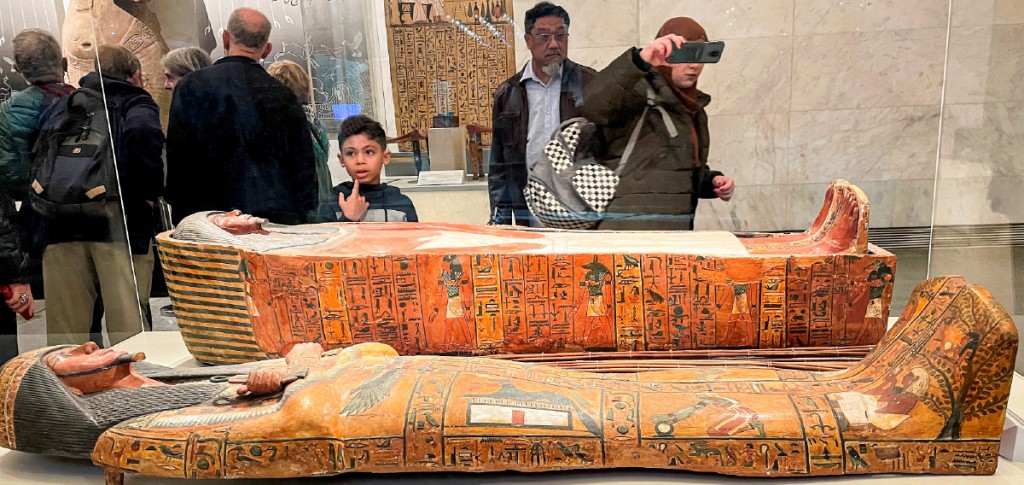Egypt, the land of pharaohs and pyramids
Egypt as a travel destination was on our bucket list for a long, long time, and that we waited so long to visit that beautiful, historic country was because we tried to club it with Israel, or Iraq, where we have been going every decade — from 2002 — for the pilgrimage to Karbala and Najaf. Of course, for the first two visits, the journalist in me took the opportunity to make it a working trip, to give the readers of the Hindu Businessline, where I was working then, a first-hand account of what was happening in that unfortunate and beleaguered country, after Saddam Hussein’s rule was dismantled by the Americans. Anyway, we’ll reserve my adventures in Iraq for another time.
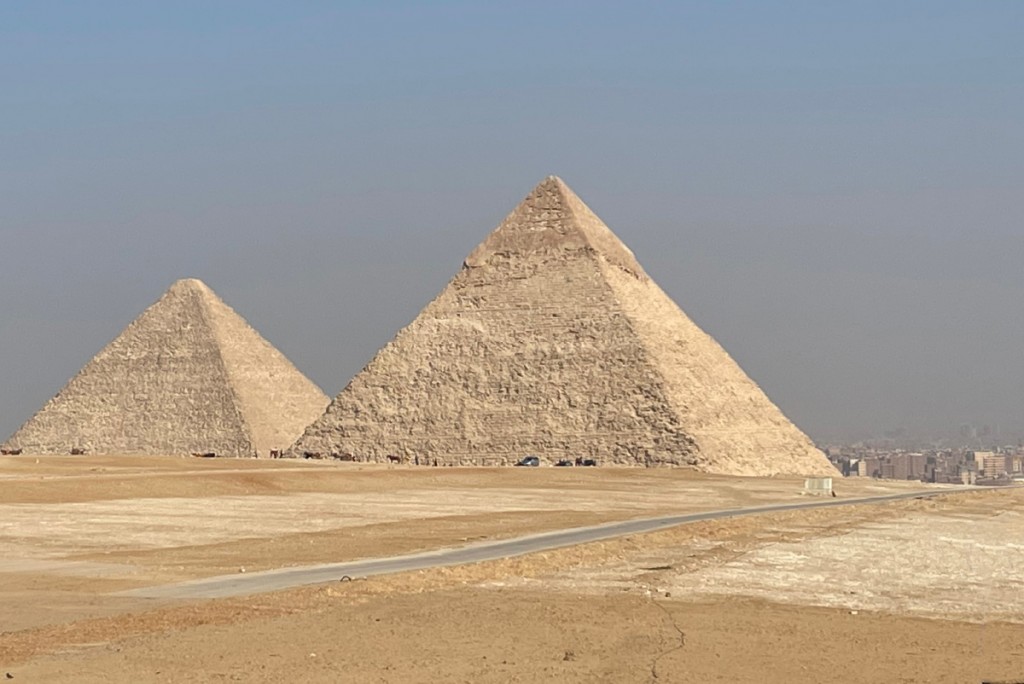
After a few attempts to club Egypt with either Iraq or Israel had failed because of visa blues in the first case — the easiest way to enter Iraq for Shia Muslims is through group visas, but the group has to be a minimum of 10 in number. In the second case, it was both a tiresome flight schedule with a 12-hour layover in Addis Ababa, and long drives at inconvenient hours. For international travel, Chennai is still back of beyond, even Bengaluru has much better flight connections.
So this January, Egypt it was! We started planning as a group of eight, but the very minute the magic destination ‘Egypt’ was mentioned, friends wanted to join! Soon the group swelled to 14, and we had to put a firm stop to more numbers. Small is beautiful they say, but we were no longer a ‘small group’.
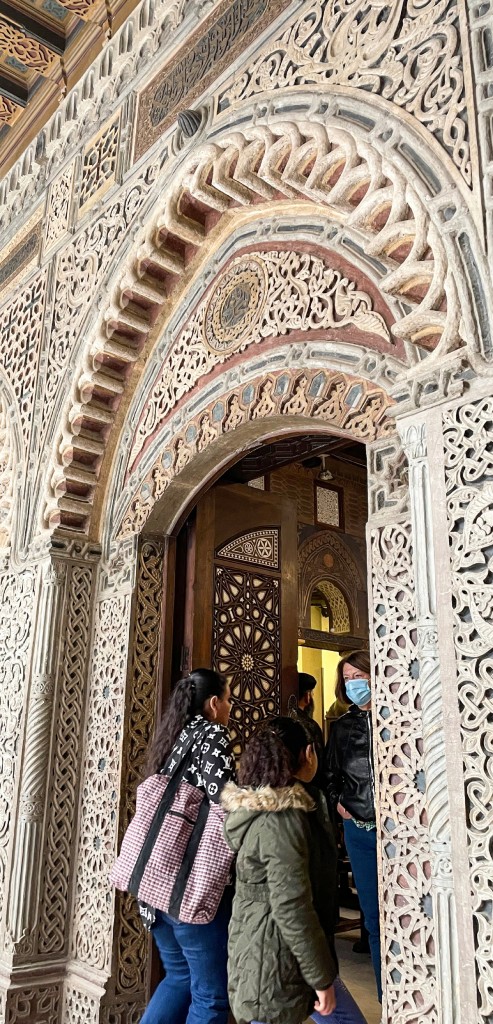
But it was a fun group alright; a very interesting mix of North Indians and South Indians; curiously enough, the most significant memory I have brought back from our 10-day trip is of a bunch of women — a mix of senior citizens and those pushing at that boundary — dancing to both Hindi and Tamil songs as our van cruised at a speed of 60, 70 and even 80 kmph! In an Islamic country, the interest this phenomenon generated on the roads can well be imagined. The dancing continued even on our ride to the airport to take the flight back home, with appreciative men passing us by, or driving in other lanes, smiling, clapping and giving thumbs up signals!
Coming to the country itself, the very name conjures up images of the pyramids of Giza. Once designated one of the seven wonders of the world, the three pyramids were built for the three kings; the oldest and largest for King Khufu, with the length at the base an average of a mammoth 230 metres; the second one’s length is 216 metres; and the smallest one is 109 metres. These were burial chambers and in keeping with the belief of ancient kings about after life and next birth, these were originally stacked with treasures such as gold and other valuables, and all else the pharaohs would need in their after-life. But all the three pyramids were plundered several times in both ancient and medieval times, and their original height has been eroded as they were stripped of their outer cover of white limestone.
Once designated one of the seven wonders of the world, the three pyramids were built for the three kings; the oldest and largest is for King Khufu.
The core of the largest or the Great Pyramid is built of yellow limestone and the construction of these pyramids is an engineering marvel of the times in which they were built — 2550 to 2490 BC. There are all kinds of theories about how exactly the pyramids were built, how many people worked on them and how long they took to complete. The ancient Greek historian Herodotus estimates that the Great Pyramid took 20 years to build, and 100,000 men, who were agricultural labourers who only worked on the pyramids when their lands were flooded by the Nile, and they had no work in their fields.
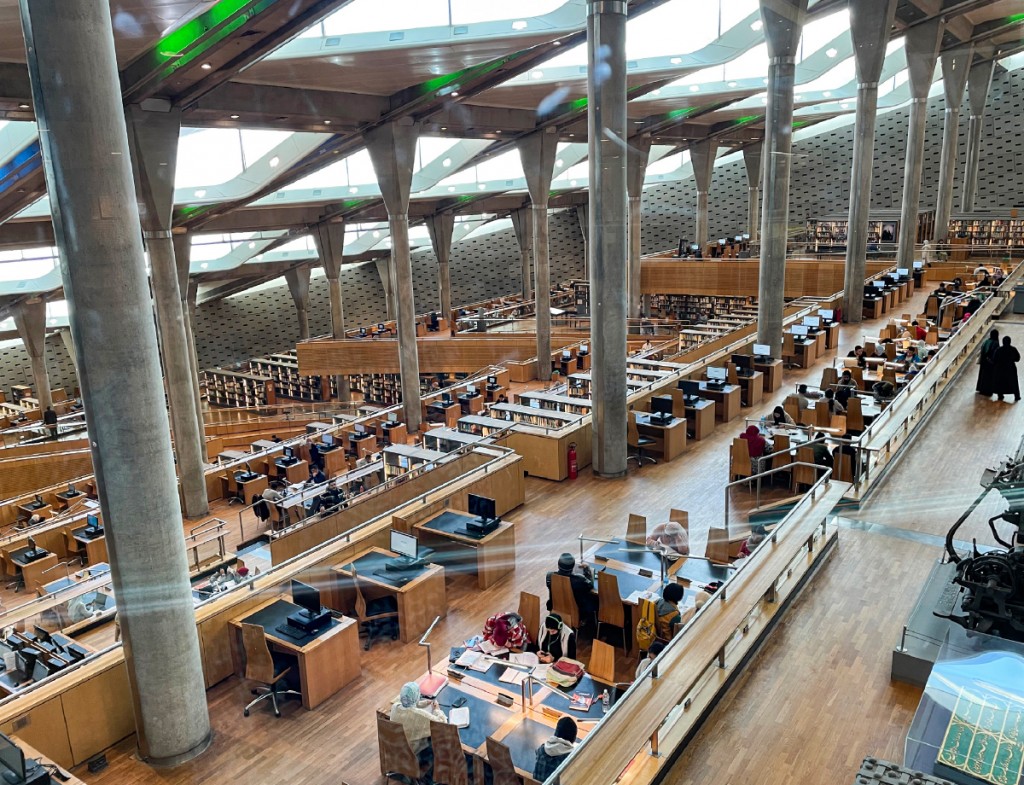
But, according to Encyclopaedia Britannica, “by the late 20th century, archaeologists found evidence that a more limited workforce — around 20,000 — may have occupied the site on a permanent rather than a seasonal basis.”
The next obvious question is the methodology used to build these huge structures in an era sans mechanisation. The Britannica says the Egyptians “employed a sloping and encircling embankment of brick, earth and sand, which was increased in height and length as the pyramid rose; stone blocks, of around 2.5 tons each, were hauled up the ramp by sledges, rollers and levers.” Just close your eyes and imagine the gigantic quantum of physical labour involved in this… the very thought makes you dizzy!
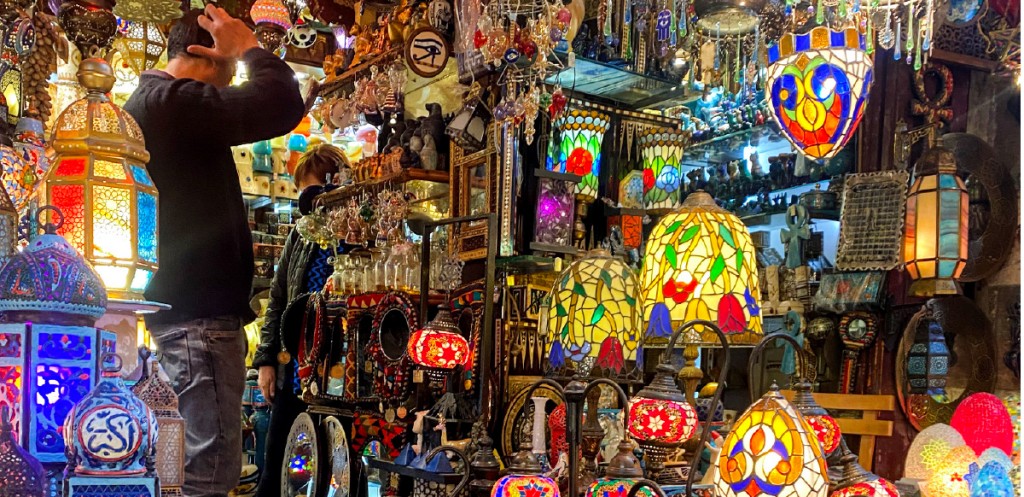
On the materials used for this massive structure, arguably the biggest ever built on this planet, it says: “Approximately 2.3 million blocks of stone were cut, transported, and assembled to create the 5.75-million-ton structure, which is a masterpiece of technical skill and engineering ability. The internal walls as well as those few outer-casing stones that still remain in place show joints finer than any other masonry constructed in ancient Egypt.”
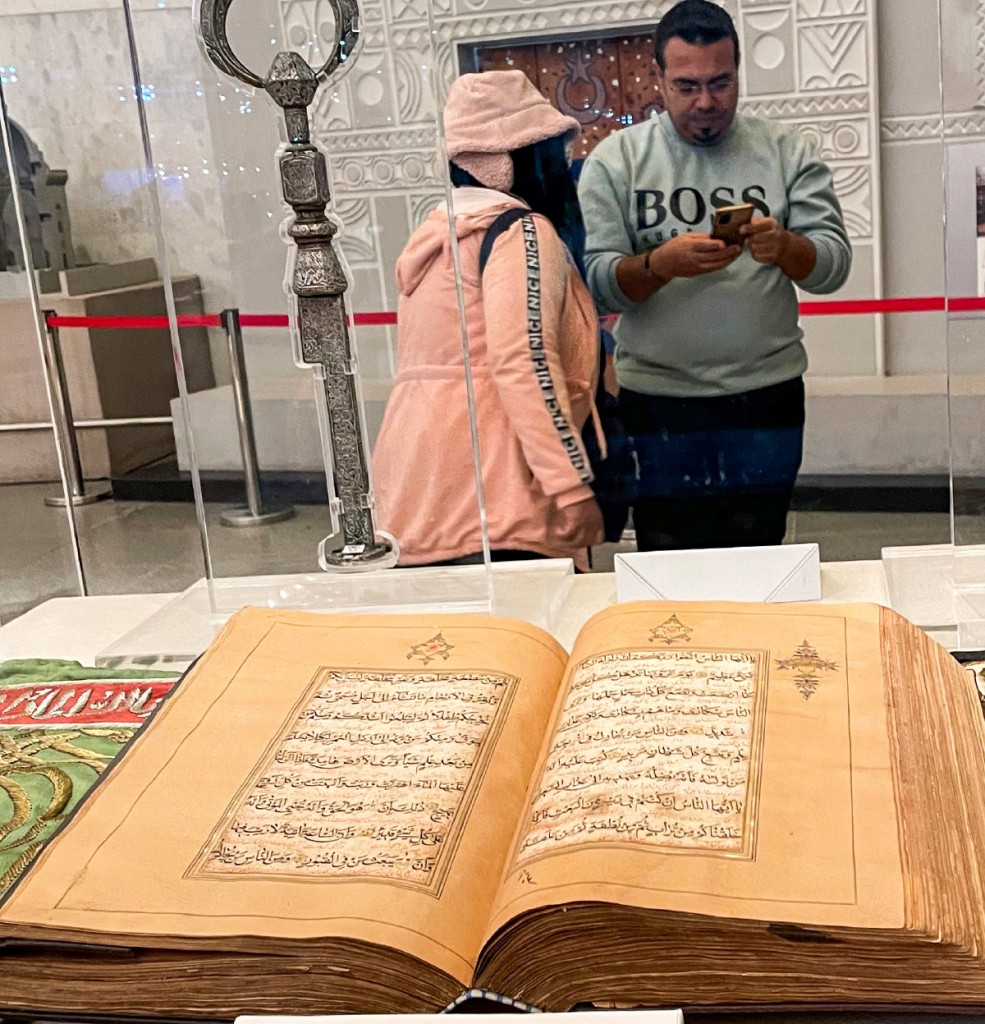
But at some level, in the dusty terrain where the gigantic pyramids stand shorn of their earlier glory and magnificent treasures within, the smooth and glimmering white limestone outer covering, I for one was left a little disappointed. Maybe it was the exhaustion caused by the harsh desert sun, the wind blowing the dust on our faces, the long walk involved, and the stark brown you saw everywhere, the legendary pyramids of Egypt left my long- cherished desire to visit the land a little unsatiated.
But bless one of our team members, who had thought it fit to book the sound and light show at the pyramids on one of the evenings. Under the dark of the night, and with adequate lighting and commentary — which certainly could have been better — much of the aura of ancient Egypt, the magnificence of the pyramids, and the mindblowing history of this wonderful land was recreated for us.
The next major stop in Cairo is naturally the Egyptian Museum in Al Tahreer Square. But before talking about the treasures of the pharaohs and queens of Egypt, do note than an estimated 42,000 Egyptian artefacts are in European and American museums. This should not surprise at least Indians as much of our ancient wealth is in British museums!
Egyptian pharaohs and kings strongly believed in afterlife and planned their burial in detail., taking along with them expensive jewellery, priceless artefacts and even food!
This Cairo museum has a rich treasure trove of over 120,000 artefacts, including the content from Ramasses I’s son Tutankhamen’s tomb and most of the mummies that have been discovered since the 19th century. The exhibits range from the beginning of the Old Kingdom of Ancient Egypt (approximately 2700 BC) through the Greco-Roman period. An interesting panel here shows King Narmer in the symbolic act of unifying Upper and Lower Egypt… which was not a single event but a series of events… the unification of the two lands is very important in Egyptian history.
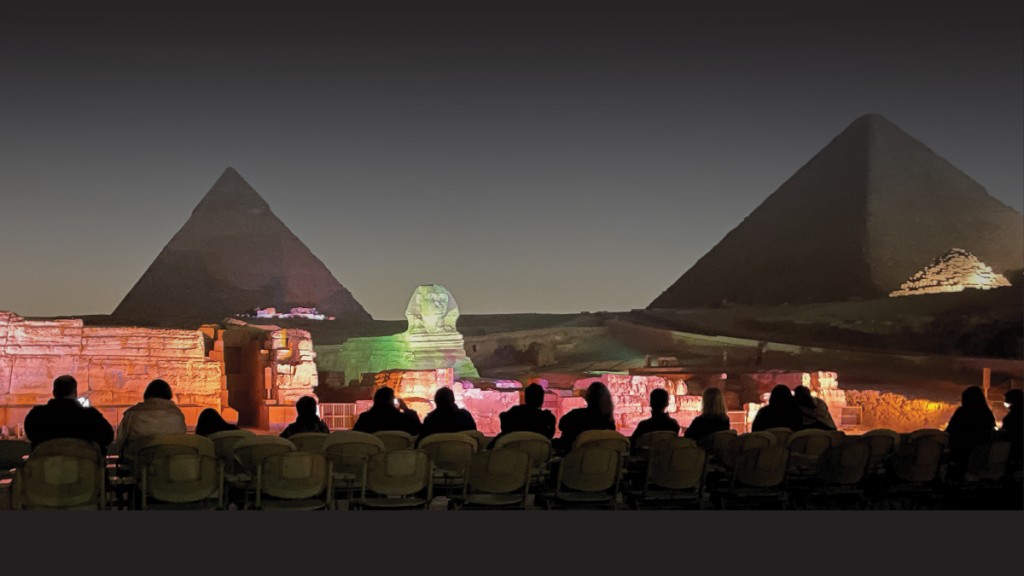
As is well-known, Egyptian pharaohs and other royalty strongly believed in afterlife and planned their final resting or burial place with great care and detail. They took along with them a bulk of their wealth in terms of expensive jewellery and other priceless artefacts. Naturally enough, the earlier burial places were often raided by thieves and stripped bare of their wealth. Hence, the later rulers became much more guarded about protecting their tombs. November 2022 marked exactly 100 years since the discovery of the boy king Tutankhamen’s tomb. He was laid to rest in the Valley of the Kings on the west bank of the Nile. This tomb is the most intact of the Pharoah’s tombs ever found, despite two attempted robberies, and its outstanding discovery was led by Howard Carter in 1922.
But, sadly enough, legend has it that Tutankhamen’s tomb is a cursed one, and whoever touches it is doomed. Howard Carter’s death after eight years is also linked to this.
Anyway, moving from conjecture to facts, Tutankhamen is one of the most important pharaohs of Egypt. He became a king while still a child after the demise of his father Ramesses I. As a plaque in this museum points out, “Tutankhamen quickly became a symbol of Egyptian identity, influencing culture, style and wonder throughout the world. The tomb contained more than 5,000 artefacts all of which will be displayed in the centrepiece New Grand Egyptian Museum coming up in Giza. He died after an accident and was buried with a lot of precious treasures.”
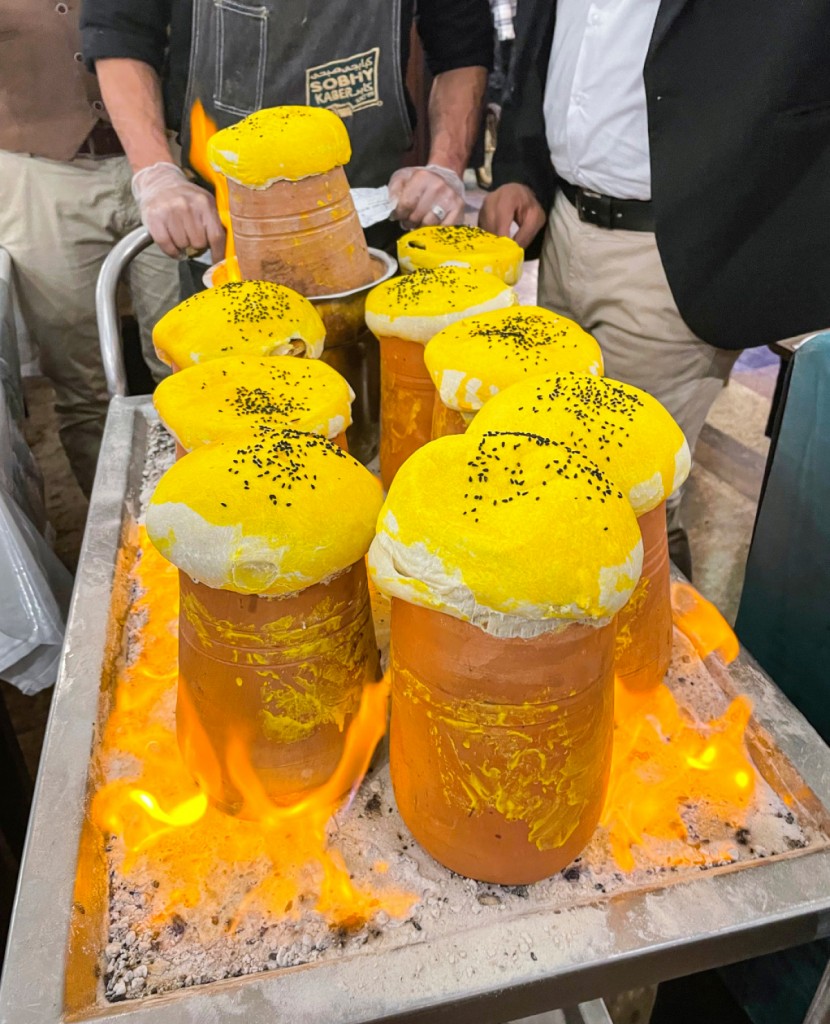
In this museum you will learn all about how the internal organs were removed from the abdomen and preserved in containers and then buried with the dead. The heart was left in the body. Later the organs were put in four canopic vases which were placed in a wooden box.
You can’t visit Cairo and not go to Alexandria, a couple of hours drive from Egypt’s capital. When Alexander the great invaded Egypt in 332 BC, Egypt became a part of the Hellenistic civilisation and then came under the rule of Ptolemy I, a prominent leader of Alexander. He declared the city an independent Ptolemaic kingdom in 305 BC and it remained so till the Roman invasion in 30 BC. This period witnessed many cultural changes as Alexandria was then made the capital of Egypt. Through its library and museum, it soon became the universal centre of science, culture and arts in the Mediterranean region. Both architecture and agriculture flourished and modern methods of irrigation were discovered, such as water wheels and water drums and Egypt became the food basket of the Mediterranean countries. Alexandria was also famous for its theatres, gymnasiums and public baths.
There are juicy stories on the lengths to which the Ptolemies went in their avid hunt for books for the Great Library, including searching every ship that sailed into Alexandria.
Our first stop in the day trip was at Pompey’s Pillar, the name given to a Roman triumphal column in Alexandria. Set up in honour of the Roman emperor Diocletian between 298–302 AD, the giant Corinthian column originally supported a colossal statue of the emperor in armour. Made from sandstone, this is a celebrated landmark and though it wears a deserted look today, let’s not forget that it was an outstanding observation point for more than 11,000 years of human occupation.
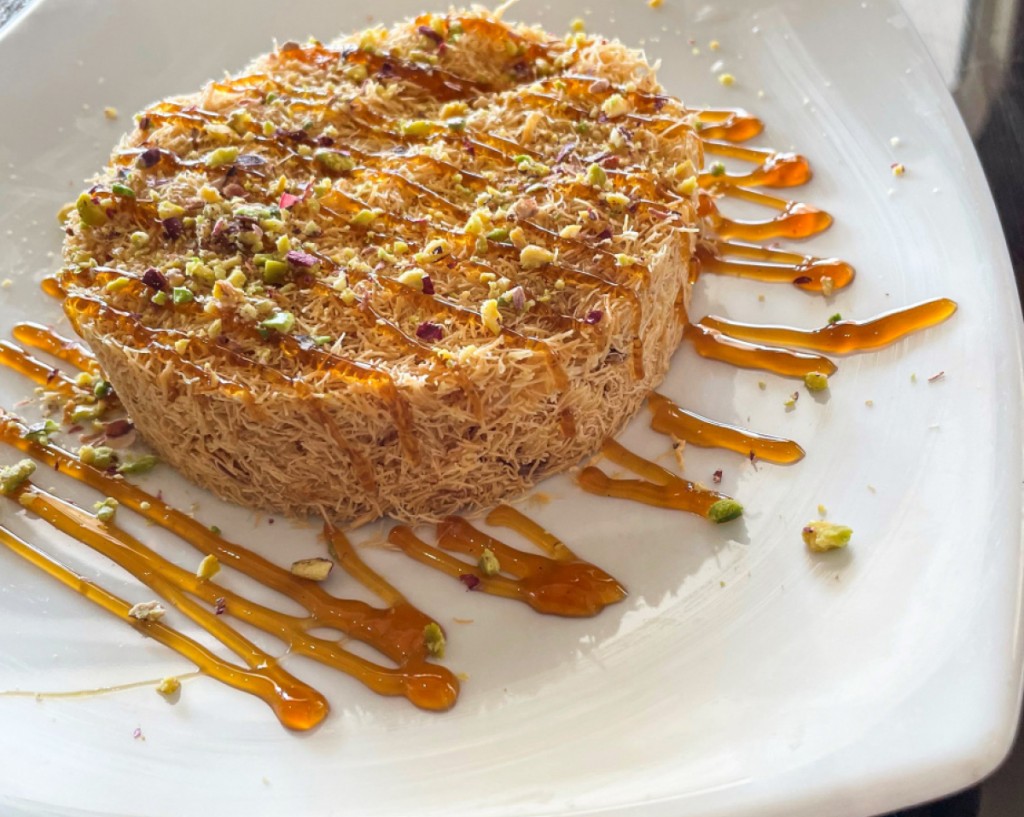
But the one edifice that comes to mind when anybody mentions Alexandria is its famous library. The Great Library of Alexandria was one of the largest and most iconic libraries in the ancient world. It was part of a larger research institution called the Mouseion, which was dedicated to the Muses or the nine goddesses of the arts.
Demetrius was a Greek politician. After his fall from power in Athens, he sought refuge at the court of King Ptolemy I ( 297 BC) and became the king’s adviser. Ptolemy, aware of Demetrius’s immense knowledge, gave him the task of setting up the library and the Mouseion. A bulk of Greek literature was kept here. There are various accounts of Aristotle’s collection of books being kept in this library, and juicy stories on the lengths to which the Ptolemies went in their avid hunt for books, including searching every ship that sailed into Alexandria. If a worthy book was found, it was acquired by hook or crook! One account says there were 500,000 books in this library at one time. While the bulk of the books comprised Greek writing and literature, and Egyptian records of their history, the Ptolemies also acquired books from all over the world.
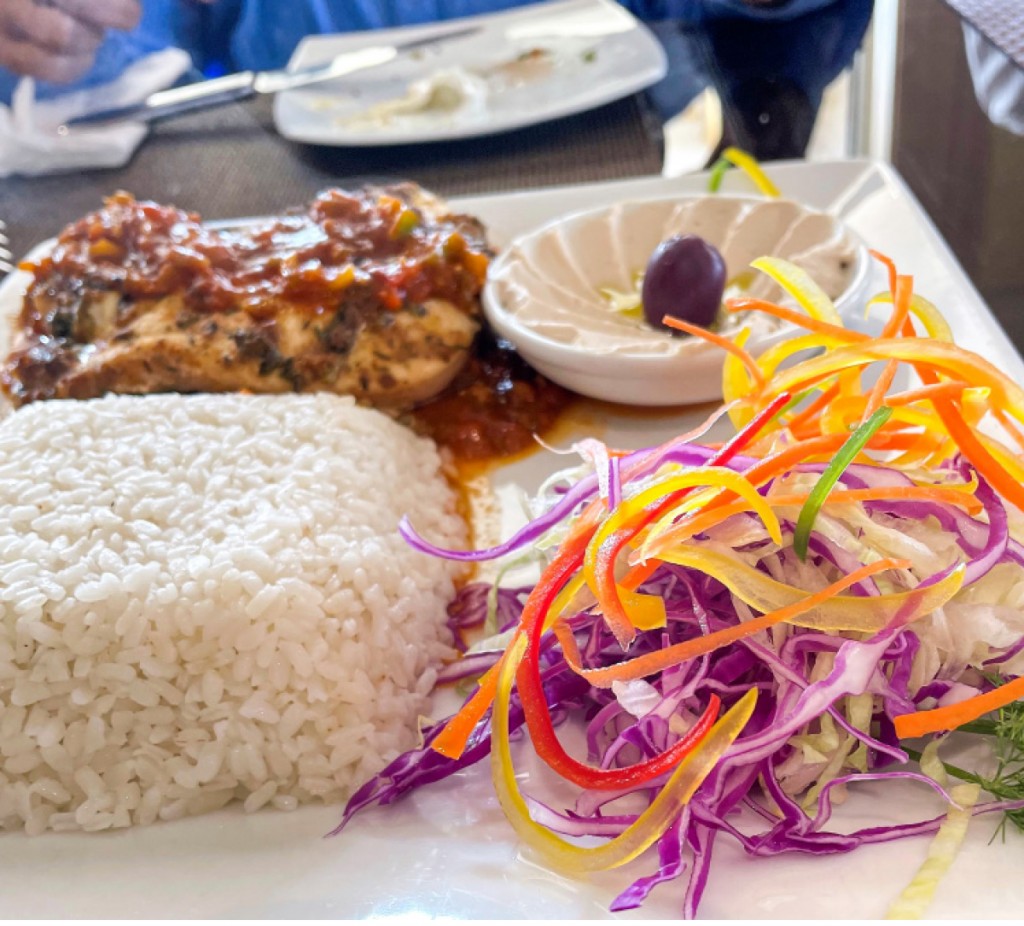
Controversies abound on how the Great Library — actually there were two, as the constantly growing number of books had to be accommodated in an additional place later — of Alexandria was destroyed. While one account says that after 642 AD, when the Arab general Amr ibn al-As conquered Egypt and occupied Alexandria, he ordered the books in the library to be burnt. But the Britannica points out that for over five centuries after the conquest, there was not a single reference to the Arabs burning the Alexandrian library. But suddenly, in early 13th century reports appeared about how Amr had burned the books of the ancient Library of Alexandria. “The story has a fictitious flavour,” it concludes.
Guides in Egypt will of course tell you that the Muslims did not destroy the library, and it was “an unfortunate casualty of war”. In 48 BC, when Julius Caesar was involved in a civil war in Egypt between Cleopatra and her brother Ptolemy XIII, Caesar sided with Cleopatra and when besieged by the Ptolemaic forces by land and sea, ordered the burning of the enemy fleet, and as the fire raged and spread, it destroyed much in the city, including the world famous library.
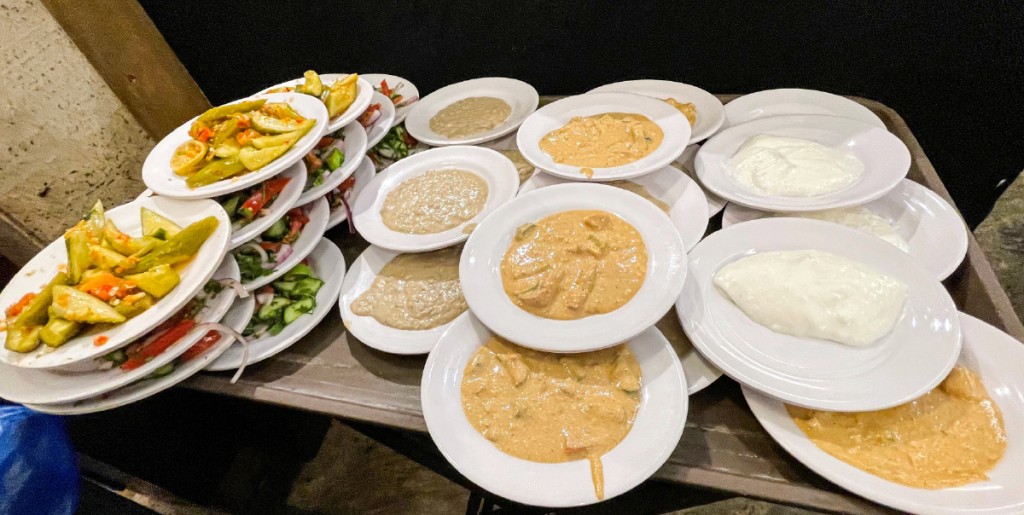
But whatever the truth, it is gratifying to note that today Alexandria boasts of a breathtakingly beautiful and magnificent library in the form of the Bibliotheca Alexandrina, built near the harbour in city centre. We were told the 11-storey edifice can store up to 8 million books. We walked around the sprawling place in absolute awe and wonder, taking in the unique design and architecture of the huge building which allows the maximum of natural light. The main reading hall extends to a mammoth 220,000 sqft.
In 1974, the Alexandria University decided to revive the library, construction began in 1995, and the complex was inaugurated in Oct 2002; the cost $220 million. In 2009, France donated some 500,000 books.
But along with pharaohs and museums, the Nile cruise and the Abu Simbel temple (details in the next issue), Egypt is also known for its food. On our first night in Cairo, thanks to our guides Manal and Ramadan, we landed up for dinner at the restaurant Sobhy Kaber, which was so crowded, and with hordes of people waiting outside for a table, that it appeared as though they were giving away food for free! But finally, with Ramadan’s influence with the owners, we did get a table — a table for 15 is not easy in any restaurant!
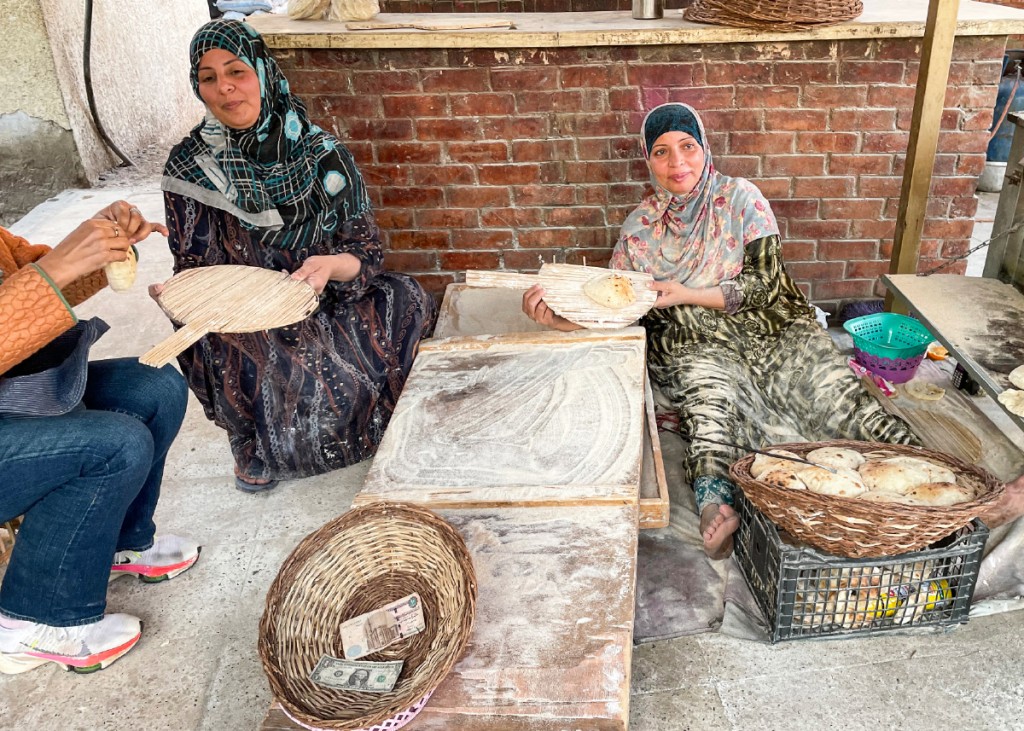
The delicacies that followed that evening, and the rest of our stay, were to die for. Koftas, kebabs and shawarma were there in plenty, but surprise of surprise, the two vegetarians in our group, always had enough and interesting vegetarian food. The pita breads, hummus, falafel, baba ganoush, and salads were all delicious. One of the most fragrant rice dishes was rice and vegetables wrapped and steamed in grape leaves (called Dolma in Greek cuisine). Another delicacy was the Koshary, a traditional Egyptian staple, made of pasta, Egyptian fried rice, vermicelli and brown lentils, and topped with a zesty tomato sauce, garlic vinegar and garnished with chickpeas and crispy fried onions. Liquor is not freely available in Egypt, but do try the most refreshing hibiscus drink to wash down your food, and of course fresh fruit juice!

For dessert, we tried different kinds of Kunafa, and found it delicious. The best part was that the food is perfectly suited for the Indian palate, being both spicy and flavourful, and is rather inexpensive. With the recent devaluations in the Egyptian Pound, the INR goes a long way there, be it in food or shopping!
But more of that in the next issue; watch out for the Nile cruise and the breathtakingly beautiful Abu Simbel temple, the balloon ride from Luxor and the awesome Valley of the Kings.
(To be continued)
Pictures by Rasheeda Bhagat

